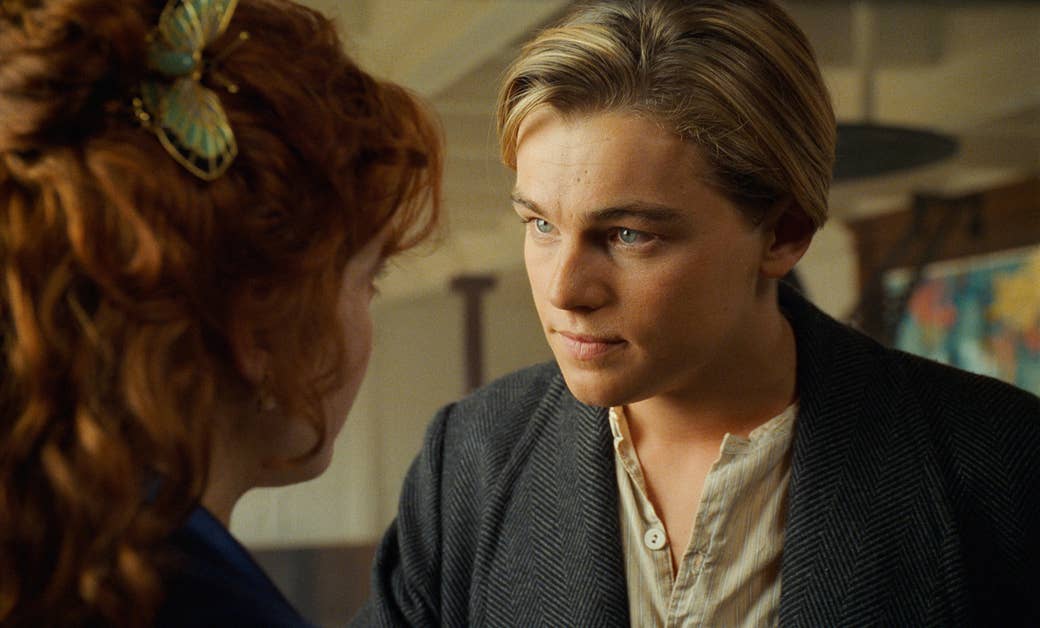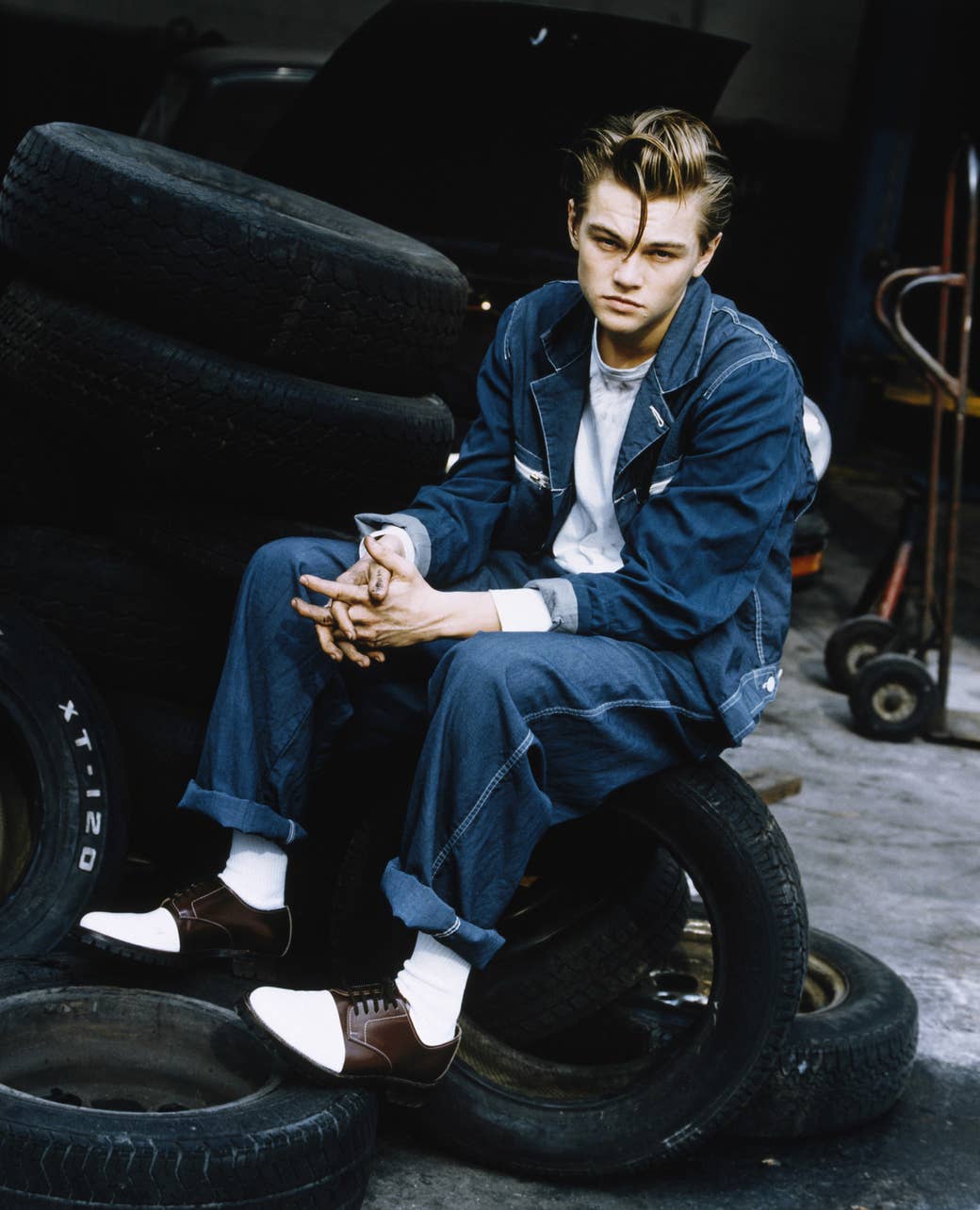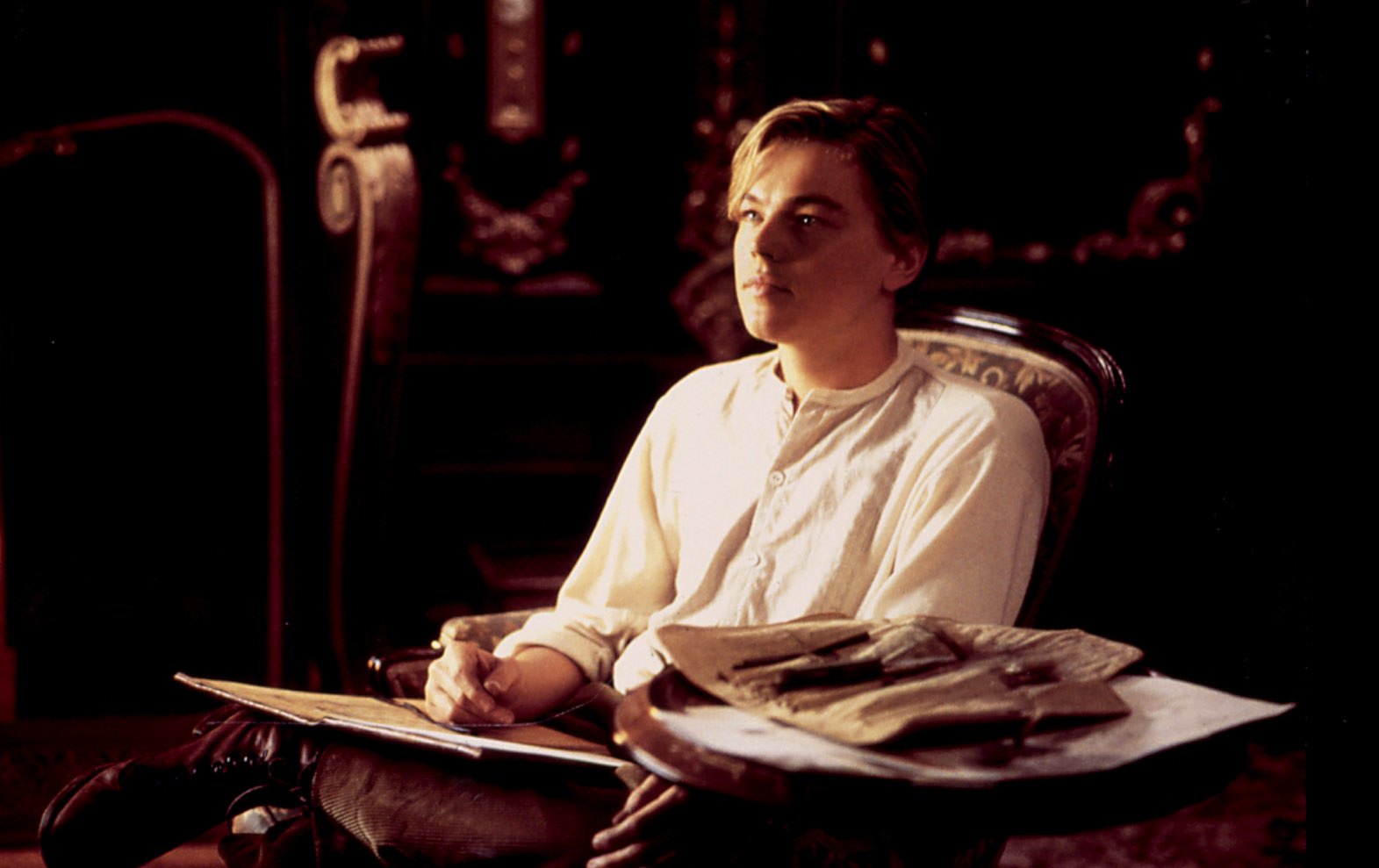
Many years before realizing, at long last, how extremely gay I am, I was in love with Leonardo DiCaprio’s Jack Dawson.
Titanic, which turns 20 today, was in frequent rotation in our household growing up. The two-VHS set conveyed just what we were getting into: This movie — about two star-crossed lovers having an affair on the maiden journey of a famously doomed ship — was so big, so grand, so epic, it couldn’t be contained on a single tape. Now, whenever I watch it, which is still embarrassingly often, I feel an urge to get up and swap part two of the video set into an imaginary VHS player after the captain says “I believe you may get your headlines, Mr. Ismay,” which is right when tape #1 would end.
Titanic satisfied the entertainment requirements of both me and my four siblings, which was rare since we were constantly battling factions with shifting allegiances. For the boys, Titanic offered guns and bloodshed; and for the girls, of course, there was a love story.
In an age of bad dial-up internet, before I found online message boards devoted to my famous teenage-era loves, I didn’t realize that I was just one of millions of girls around the world who’d fallen prey to Leomania — I thought Leo was uniquely special to me, and to my sister, and to a handful of my friends whose parents hadn’t deemed Titanic too violent or sexually inappropriate for preteens. I loved the same things about Jack (and, by proxy, Leo) that everybody else did: his sweet vulnerability, his artsy way of looking at the world, his heart-stopping pretty-boy handsomeness.
It was only much later, after I came out as gay toward the tail end of college, that I began to notice that I was not the only lesbian who’d once had a serious thing for Jack Dawson. At queer parties, Leo’s name would inevitably come up during conversations about the heartthrobs we’d lusted after as sexually confused tweens, alongside Fresh Prince–era Will Smith, Cry Baby–era Johnny Depp, and Devon Sawa, the human version of the titular ghost in Casper who dances with Christina Ricci for five seconds. They were all permanently imprinted on our latently lesbian hearts – because they all kinda looked like lesbians.
Leo, baby-faced at 22 years old when he shot Titanic, shares a certain vibe with the type of women and nonbinary people I tend to date now, from his masculine-leaning androgyny to his swoop of ‘90s-era boy hair. Also, those costumes: the flannel! The corduroy! The suspenders!!! So gay it hurts. He was the soft butch of my dreams.
(I know the phrase “looks like a lesbian” pisses some people off — I can hear the indignant comments now: What, exactly, is a lesbian supposed to look like? — and like, sure. As a more feminine lesbian, I get it; we don’t all look the same. But this is a joke with roots in a verified cultural norm. And the world is burning, people! Let me have this.)

Some queer women know in their bones they like other girls at very young ages; others, like me, grew up happily heterosexual, until puberty had its way with the boys we once loved. Looking back, I can trace hints of my gayness through my teen years and early adulthood, but I never developed crushes on any of my straight-girl friends. For the most part, I was perfectly happy dating guys — or, I should say, as perfectly happy as is possible when dating clueless, emotionally underdeveloped teen boys.
As a teenager who doused her eyes in black shadow and wore two studded belts on top of each other, I went crazy for the skinny, effeminate kids who ran in my unruly social circles — boys in tight jeans with hair as long, gravity-defying, and dyed to oblivion as mine, who could wear eyeliner better than I could. They were broodingly anemic, androgynous alternatives to the beefier jock-bro types I couldn’t stand.
But then, even the most androgynous of teenagers grew up. Their soft baby faces gave way to strong jaws spiked with stubble; their slight bodies hardened and became alien to me. By the time these boys became young men, my attraction to them went out like a light. And though it may have seemed that way to me at the time, I don’t think my switch boiled down to a gender-essentialist disgust with the “male” body — I wasn’t grossed out by the guys I dated, but I did start getting bored, and it did start feeling wrong, for a whole host of complicated reasons to do with gender presentation and identity and the complicated cocktail of human sexuality. Point is: I was, in fact, gay.
I sometimes wonder if I might have figured out the whole queer thing earlier if I’d grown up with more varied pop-cultural depictions of masculine or androgynous girls. I harbored deeply buried crushes on the ’80s and ’90s icons of female androgyny, from Mary Stuart Masterson to, duh, Winona Ryder, but since their characters were so often shoehorned into obligatory hetero romances (or, in the case of Fried Green Tomatoes, queerness was heavily implied but never made explicit), I made the very common baby-gay assumption that my fluttery feelings toward female characters came from wanting to be them, not sleep with them.
But at least I had Leo in Titanic. Jack was masculine-lite but not hung up on it — a foil to Billy Zane’s Cal, Rose’s fiancé, whose fragile hold on his own sense of masculinity makes him a table-throwing, woman-hitting, trigger-happy monster. Nor was Jack afraid of professing his feelings (a precursor to the emo boys I loved IRL?) or being kind toward others (I know it’s emotionally manipulative, but him saying “you’re still my best girl, Cora” to the little kid in the below-deck dance scene gets me every time).
Perhaps most of all, he was free — liberated the way that Kate Winslet’s Rose, trapped in her gilded cage, longed to be and eventually became, thanks to him; liberated the way that only a poor white guy traveling the world without a care can be. He wasn’t too different from the queer lost bois I’d fall in love with later in my life.

I’d gotten my signals crossed. I wanted to be with Jack, sure, but with the sort of muddled desire of a prepubescent girl without a good grasp on the actual mechanics of sex. Like every other androgynous guy I loved, from Jesse McCartney on Summerland to the men in emo bands who decorated my teenage bedroom walls, Jack was just an androgynous blank slate upon whom I could project my messy, half-formed fantasies. That’s something I think most girls, straight or queer, had in common when we were young. Really, I just wanted to be Jack, someone who magics himself onto the trip of a lifetime and gets the girl.
I think I had crushes on both Jack and Rose, really. As a femme-ish queer person who’s attracted to both masculine-leaning and feminine-leaning people, my shift from identification to desire and back again when it comes to gender identity is in constant flux. As a preteen, I was deeply and thoroughly embarrassed whenever the Draw Me Like One of Your French Girls scene came on during a public viewing — my siblings and I would always pretend to be distracted by something, or else just leave the room — but I found myself gravitating toward it alone, late at night, when everyone else had gone to sleep. That was the only time I’d watch the scene in full, and it felt like I was doing something very, very bad.
I’ve always thought one of the other reasons I didn’t flip the gay switch earlier is that for so long, I was attracted to the idea of men being attracted to me — that carried me easily from my tortured preteen years to my relatively well-adjusted time later in high school. I had a nice, normal boyfriend who loved me. For so long, that was enough. So, when I was younger, I thought I was watching the Titanic drawing scene purely from Rose’s perspective — channeling the eroticism of being watched, and wanted, by men — but of course I easily slipped into Leo’s perspective, too, though I was afraid for many years to admit that to myself.
Leo’s power as Jack Dawson lives on so strongly, of course, because after he gets the girl he loses everything. He doesn’t join Rose on the piece of wreckage floating through the rest of the sinking debris, much to everyone’s horror and dismay, and his death leaves him frozen for all time as a 22-year-old dreamboat in ocean-depth ember.
Leo, like the guys in my actual life, keeps aging — growing into the kind of man I’m not remotely attracted to — but Jack lives on, a fixture of androgynous never-never land. He would remain forever trapped within Titanic’s bloated three-plus-hour running time just as he was confined only to Rose’s memories; he would always be sweet and innocent and safe, someone I could fantasize about ad nauseum but would never actually have to touch. That was his queer magic for me and for so many other girls, who later grew up and figured out what we’d really been looking for. ●
